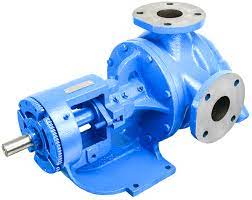
Positive displacement pumps and centrifugal pumps are the two main types of pumps available for industrial applications. Positive displacement pumps in GA are capable of sustaining a relatively constant fluid flow rate, at a given speed, irrespective of the discharge pressure. This fundamental characteristic sets them apart from centrifugal pumps, which are also referred to as non-positive or negative displacement pumps.
Positive displacement pumps move fluids by drawing them into an expanding space or cavity. This cavity then reduces, serving to discharge the same fluids.
These pumps generally come in three types - rotary, reciprocating, and linear. This categorization is based on the mechanism the pump relies on to move the liquid.
The first type uses rotating mechanisms such as gears and screws to accomplish the task. The second type achieves positive displacement with the use of piston or plunger mechanisms - a hand pump is a good example of this.
Here are a few important things you should know before you purchase your next positive displacement pumps in GA.
1. Positive displacement pumps can be used when a constant flow rate is required.
2. These pumps should never be operated with a closed valve because unlike centrifugal pumps, they don't have shutoff heads and continue to pump. This can cause a discharge line to develop leaks or even burst.
3. An internal or external safety valve should be installed on the discharge end when using these pumps to prevent damage.
4. Positive displacement pumps in GA are best suited for applications that demand only moderate flow and pressure rates.
5. The rotary type of positive displacement pumps are highly efficient but are not suitable for high flow rate applications. The revolutions per minute (RPM) can be increased to step up the flow rate, but this will eventually wear down the rotary mechanism, increasing the clearance between the rotor and the side walls, thereby decreasing efficiency.
6. Similar to centrifugal pumps, positive displacement pumps are not self-priming.
7. Unlike most centrifugal pumps, however, positive displacement pumps can get rid of trapped air in the system on their own.
8. However, these pumps can only operate when the pressure at the inflow end provides the minimum pressure required by a unit. This is also required to get rid of any trapped air.
9. These pumps are best suited to handle high-viscosity fluids.
10. Positive displacement pumps in GA are, making them the preferred type of pumps to handle a broad range of fluids including oils, chemicals, hazardous liquids, and wastewater among other things.
For more detailed information on positive displacement pumps in GA and to get professional advice on choosing the right type to suit your needs, call us today. We specialize in a variety of advisory and installation services, all designed to help you get the most out of your liquid handling equipment.



Notifications